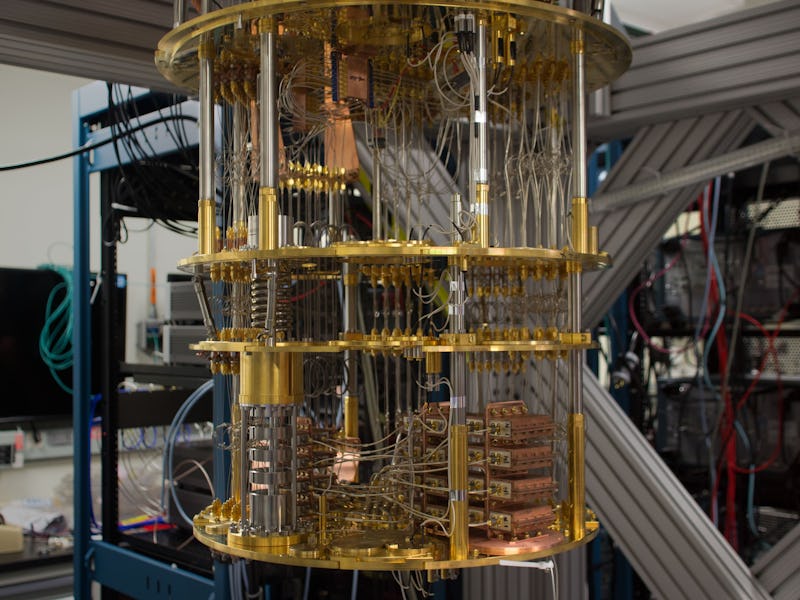Quantum Computers' Secrets Lurk Within This Strange Form of Matter
The physicist behind the new study gives the lowdown on quantum spin liquid.

Quantum computers have a chance to revolutionize the 21st century, unlocking ways to answer incomprehensibly complex questions that would leave even today’s most advanced computers baffled. But first physicists have to figure out how to store all that new quantum data, and for that they need to peer deep into the most exotic corners of the subatomic universe.
As Boston College researcher Fazel Tafti tells Inverse, he and his team have discovered a new material that could one day prove perfect for the task of keeping the quantum state of individual atoms from changing or decaying, which is crucial if you want to store quantum information long-term.
The material in question is an example of an exotic phase of matter known as a quantum spin liquid, as the researchers explain in the latest issue of the Journal of the American Chemical Society. Tafti and his team have discovered these properties in copper iridate, a compound of the elements copper, iridium, and oxygen. Its atomic geometry is crucial to its quantum weirdness.
“Copper iridate has a honeycomb geometry, just like the honeycomb in nature but made of atoms,” Tafti tells Inverse. “Due to these particular geometries, the spins of electrons never freeze. They keep jiggling around without ever being able to freeze and form a magnet, which is the natural tendency of the material. This phenomenon is called ‘magnetic frustration.’”
The honeycomb structure is crucial to the spin liquid.
The quantum world is studiously confusing, so a quantum spin liquid is not actually a liquid. But it gets called that because of those magnetic properties. Much like how a liquid is a more disorganized form of matter than a solid, the magnetism in a spin liquid is less orderly than those in the magnets we’re familiar with.
“Any electron has an internal magnetic moment (internal compass) with a tiny North pole and South pole,” Tafti tells Inverse. “A magnet (such as the fridge magnets) is a solid material where the spins of all the electrons are frozen along the same direction. But if the spins of the electrons in a material is prevented from freezing, then we will have a liquid of spins.”
In spin liquids, the magnetism of the electrons never freezes, even if it’s cooled close to absolute zero. This is unlike anything we experience in the everyday world, and it carries with it a bunch of exotic properties, including one called long-range entanglement, in which one particle’s quantum state is twinned with that of another particle some distance away.
In future quantum computers, this property would help maintain the integrity of the qubits, or the individual units of quantum information. Materials need either a honeycomb or triangular atomic structure to form a spin liquid. Researchers in 2012 found a naturally occurring example in the mineral herbertsmithite.
Herbertsmithite, a natural home for quantum spin liquid.
Tafti’s work, however, could prove especially important, as it now points the way to discovering many more quantum spin liquids — and, perhaps, zeroing in on one that’s especially well-suited to the rigors of quantum computing.
“Experimental discoveries take a long time to occur because scientists have to try every possible path allowed by nature, and nature could be very [elusive],” says Tafti. “But now that we managed to make one spin liquid, we found the recipe to make more of them. The next step will be to use the same recipe of copper iridate and apply it to other elements in the periodic table to make more spin liquids.”
Additional reporting by Rae Paoletta.
If you liked this article, check out this video about a quantum computer the size of a soccer field.